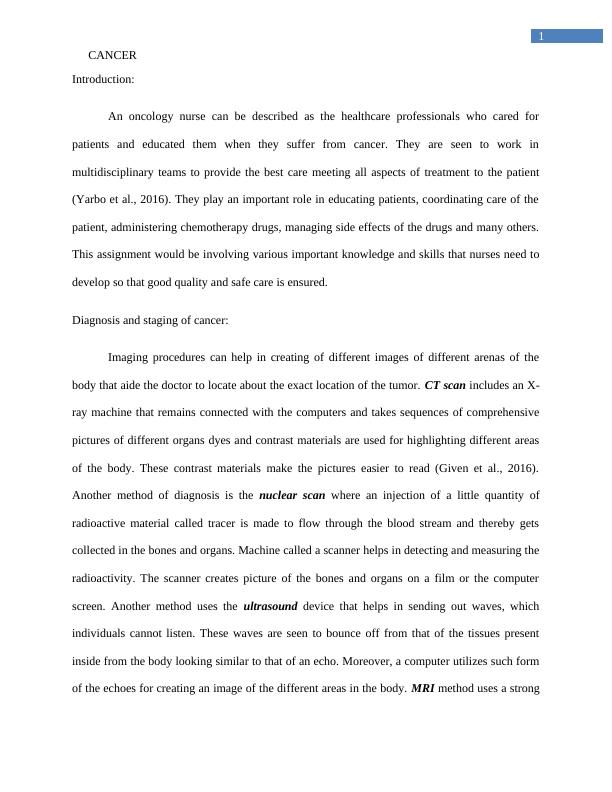Cancer: Diagnosis, Staging, Complications, and Treatment Side Effects
This is a typing template for APA papers, providing proper formatting for the APA 6th Edition. It is designed to help students set margins, spacing, and other formatting requirements.
8 Pages2243 Words273 Views
Added on 2023-06-03
About This Document
This article discusses cancer diagnosis, staging, complications, and treatment side effects. It emphasizes the role of oncology nurses in cancer care and provides ways to lessen physical and psychological impacts of cancer and its treatment. The article cites relevant studies and literature to support its claims.
Cancer: Diagnosis, Staging, Complications, and Treatment Side Effects
This is a typing template for APA papers, providing proper formatting for the APA 6th Edition. It is designed to help students set margins, spacing, and other formatting requirements.
Added on 2023-06-03
ShareRelated Documents
End of preview
Want to access all the pages? Upload your documents or become a member.
(PDF) An Overview of Cancer Treatment Modalities
|9
|2031
|122
Cancer Causes and Symptoms Assignment
|8
|1966
|233
Approach To Care For Cancer
|7
|1822
|421
Approach To Care For Cancer | Assignment
|8
|2100
|81
SYSTEMATIC REVIEW AND META-ANALYSIS.
|12
|3686
|2
Assignment Reduction Of Physical & Psychological Effects Of Cancer
|8
|2096
|125



